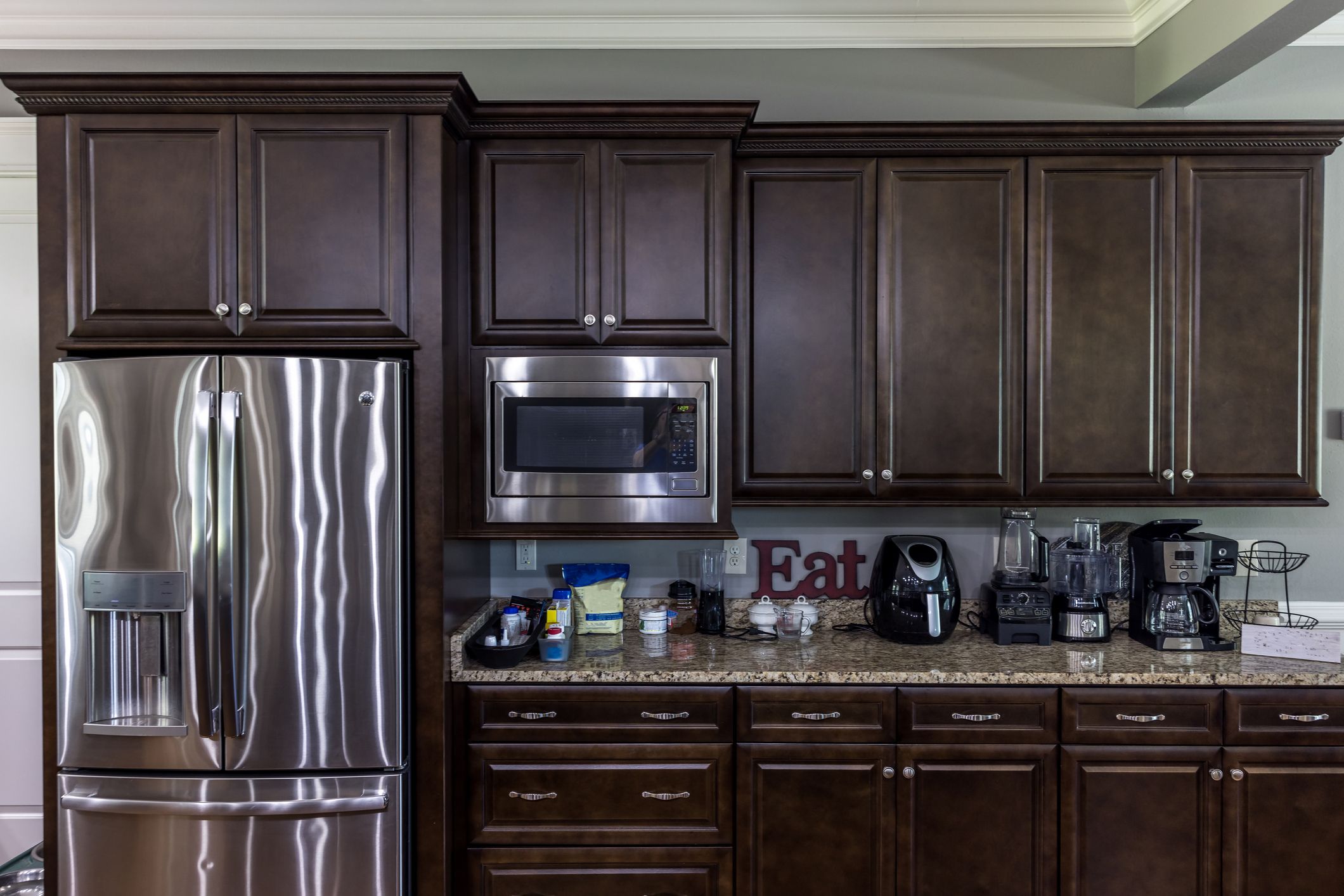
How Many Appliances Is Too Many? Preventing Outlet Overloads in DFW Kitchens
Published on July 9, 2025
Written by Amanda Bruce
How Many Devices Can You Plug Into One Outlet?
Have you ever plugged in a toaster oven, microwave, and coffee maker at the same time—and wondered if it was safe? You’re not alone. Many homeowners don’t realize how easy it is to overload a standard kitchen circuit, especially in older homes around Flower Mound, Southlake, or Highland Village.
At Tradesmen’s Pride, we’ve seen firsthand how outlet overloads lead to real damage, smoke, and fire risk. Here’s what every homeowner should know to stay safe and protect their home.
What Is an Overloaded Outlet?
An overloaded outlet happens when the combined electrical current (amps) of all the plugged-in devices exceeds the rating of the circuit they’re connected to. Most household outlets are rated for 15 amps (some are 20), and going beyond that limit creates excess heat in the wires, outlets, and plugs.
This heat can:
- Melt outlet components
- Ignite surrounding material like sawdust, paper, or curtains
- Cause arc faults (a leading cause of electrical fires)
- Over time, damage the breaker or prevent it from tripping
And worst of all: the danger is often invisible until it’s too late.
Real-Life Example: Kitchen Outlet Smoked Out
One of our clients in the Flower Mound area had a high-end toaster oven plugged into their kitchen outlet. Suddenly, the outlet started smoking.
But here’s the important detail: the outlet wasn’t the problem—the circuit was.
That one kitchen circuit was likely also powering:
- A coffee maker
- The microwave
- Possibly a refrigerator or garbage disposal
By adding the toaster oven—especially during peak usage—the total load exceeded what the 15-amp circuit could safely handle. This led to overheating behind the wall, eventually causing smoke and the real risk of a fire.
What Is an Amp and Why Should You Care?
An amp (short for ampere) is a unit of electric current. If you think of electricity like water, amps are the flow rate. Circuits, wires, and outlets are only designed to handle so much flow—push too much through, and they overheat.
Common Appliance Amp Draws (and How They Add Up)
Here’s a quick reference for what everyday kitchen appliances draw:

⚠️ Example Overload Scenario
On a single 15-amp circuit:
- Microwave (10 A)
- Coffee Maker (8 A)
- Toaster Oven (12 A)
That’s 30 amps on a 15-amp limit—and that’s how fires start.
Warning Signs of an Overloaded Circuit
Be on the lookout for:
- Warm or hot outlets or plugs
- Buzzing or crackling sounds
- Lights dimming or flickering when appliances start
- Circuit breakers that trip when using multiple devices
- Reliance on extension cords or daisy-chained power strips
If you notice any of these issues in your Flower Mound or Southlake home, it’s time to call a licensed electrician.
How to Stay Safe (and Upgrade Smartly)
- Avoid plugging multiple high-wattage devices into the same outlet
- Never daisy-chain power strips
- Install dedicated circuits for heavy-load appliances like microwaves, toasters, or garage tools
- Get older homes professionally inspected
- Consider smart home upgrades in Lewisville or nearby areas that monitor your electrical usage in real-time
Before calling an electrician, here’s a simple homeowners’ first step.
Want to Stay Ahead of Outlet Overloads? Know What’s on Each Circuit
One of the easiest ways to prevent overloaded circuits is to find out what’s actually on each one. In many homes—especially older ones—the kitchen outlets might be sharing a circuit with your dining room lights or even a hallway outlet.
How to Map Out Your Circuits:
You don’t need special tools—just a little time and a helper.
- Grab a notepad or use your phone’s notes app.
- Go to your electrical panel and flip one breaker off at a time.
- As each breaker is turned off, walk through the house and test:
- Outlets
- Light switches
- Built-in appliances (microwave, garbage disposal, etc.)
- Label each breaker with what it controls (e.g., “Kitchen counter outlets + microwave”).
- Pay attention to any “mystery connections”—you might be surprised how many rooms or appliances are tied to a single breaker.
This simple step can help you:
- Avoid overloading circuits
- Spot wiring that may need to be updated
- Give electricians helpful info if you ever need to add a dedicated outlet or smart circuit
Bonus Tip:
When in doubt, have a licensed electrician install dedicated circuits for major appliances like:
- Toaster ovens
- Air fryers
- Space heaters (especially in garages)
- Garage tools
- Electric dryers or EV chargers
Need an Electrician in Flower Mound or Surrounding Areas?
Once you know what’s on each circuit, you can make smarter decisions—or reach out to us at Tradesmen’s Pride to install additional dedicated circuits for peace of mind. At Tradesmen’s Pride, we help homeowners protect their homes from unseen fire hazards and modernize outdated wiring with care, professionalism, and expert communication. Whether you’re dealing with flickering lights, suspicious outlets, or planning a smart home upgrade, our licensed electricians serve:
- Flower Mound
- Lewisville
- Highland Village
- Southlake
- Coppell
We don’t just fix problems—we help you understand them. Contact us and we’ll make sure everything is safe, smart, and up to code.